Case Studies
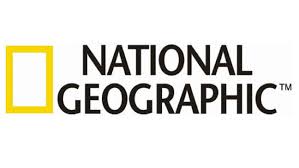 National Geographic wanted to launch a new publication specifically pitched to teens and ‘tweens, ages 11-17, that outlined not only career options and life directions in the pursuit of information on other cultures, but that also introduced this younger target audience to the benefits of full Society membership.
National Geographic wanted to launch a new publication specifically pitched to teens and ‘tweens, ages 11-17, that outlined not only career options and life directions in the pursuit of information on other cultures, but that also introduced this younger target audience to the benefits of full Society membership.
Granite Partners was asked to devise a marketing and media plan for the launch of the new publication, using in-house list resources, and to derive our own creative direction, given only the audience parameters and subscription targets.
GP devised a plan that included a multi-stage interactive direct marketing approach that engaged the target audience in a treasure hunt, searching for images through a series of educational collateral pieces and ended in a forced free trial of the new publication to those who found all the images and solved the puzzle.
Response was overwhelming, 4.5% of originally mailed recipients were engaged in all four collateral pieces, solved the puzzle and requested the prize – 45% of those ended up being paid subscribers for a lifetime value of 4 years of subscriber benefits..
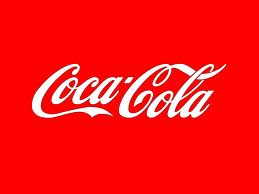 The fountain division of the softdrink giant had experienced a drop in sales from among certain outlets serviced by the fountain division – non-canned or bottled soda distributed at retail food outlets, specifically alternate sub brands, Diet Coke, Sprite and some others. Granite Partners was asked to find out why, and rectify the situation, halting the slide and boosting single store sales over the prior year.
The fountain division of the softdrink giant had experienced a drop in sales from among certain outlets serviced by the fountain division – non-canned or bottled soda distributed at retail food outlets, specifically alternate sub brands, Diet Coke, Sprite and some others. Granite Partners was asked to find out why, and rectify the situation, halting the slide and boosting single store sales over the prior year.
After undertaking extensive interview research, on-site primary and secondary research on the fountain beverage space, Coke products, and fountain purchase behavior specifically, GP recognized the reasons for the drop in sales as a result.
An analysis of how patrons of these retail outlets made decisions about beverages pointed up a weakness in the sizing, pricing and promoting of these Coke sub brands. They were not meeting the needs of the patrons in several of the regional outlets – the small beverages were too small, and priced lower than was necessary to trigger a sale, but the medium was perceived as too large and too expensive to make the leap from the small, reducing overall net sales of soda.
Promotional issues went deeper and were more difficult to determine. The research showed that preference for these brands was there, but there was no easily actionable way to take advantage of it – customers thought they might be available, but didn’t want to ask, and just took what was the most top of mind based on the signage near the menu – regular Coke. Sub brand signage was available to retailers to be able to adjust to local preferences, but it was difficult to order under the current system, and was expensive, as these resources were centralized in a single warehouse ordering system, some distance from the affected areas. It was hard for retailers to order the additional materials, and the money ended up coming out of their pockets unexpectedly.
The GP team persuaded Coca-Cola to make a full range of promotional products available to retailers on a more regional level through their distributor, so the on-site rep filling the soda orders could also bring the proper promotional material with them and install them at the next refill cycle. This way, the rep, with whom the retailer already had a relationship, was comfortable making not only recommendations, but could make those recommendations a reality with their own initiative, at their discretion.
As a result of these promotional, operational adjustments, sales of single store fountain beverages jumped 23% in the first quarter following implementation, and up a total of 30% for the year for those sub brands affected.
Talk.com was a start-up telecom provider offering bundled local and long distance service on a regional basis in Georgia, Tennessee, Arkansas, Kentucky and Alabama. They needed a way to convince phone users in those areas to switch from the established local provider and asked GP to create a full scale campaign on a limited budget and that could be rolled out on a national basis as a scalable effort, ramped up as more licenses were obtained in additional states.
After some primary and secondary research into the local phone market, GP advised and created a multi-media approach including direct mail, FSI’s in local papers, radio, and outdoor. Research indicated that outdoor would compete effectively with the existing major provider, who had very little presence outdoors, and would couple synergistically with the radio spots during morning and evening drive, to trigger conversion.
The direct marketing was used to jumpstart branding and to drive 800# queries, and the FSI’s served to reinforce memory and boost recognition for the outdoor, all timed to work cohesively with the radio spots in a progressive pattern, building recognition in a short period of time, and driving conversion to the 800 number specifically selected for the campaign.
The results were surprisingly strong, with Talk.com taking 22% of market share away from its larger competitor within 3 months. The campaign was subsequently rolled out in 6 other states, with similar results.
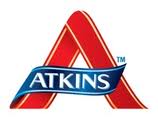 In the early 70s, Dr. Robert Atkins, a noted cardiologist in New York, developed a specific dietary regimen that seemed to shed pounds miraculously. Celebrities embraced this new diet, Dr. Atkins appeared on many of the popular talk shows of the day, published the diet in a book, the Diet Revolution in 1972, which sold 10,000,000 copies worldwide, and subsequently slipped from the public eye amid cries from the AMA of increased heart risk from his high protein low carb approach.
In the early 70s, Dr. Robert Atkins, a noted cardiologist in New York, developed a specific dietary regimen that seemed to shed pounds miraculously. Celebrities embraced this new diet, Dr. Atkins appeared on many of the popular talk shows of the day, published the diet in a book, the Diet Revolution in 1972, which sold 10,000,000 copies worldwide, and subsequently slipped from the public eye amid cries from the AMA of increased heart risk from his high protein low carb approach.
The diet evolved and he published a total 16 other related books, including cook books, extensions and refinements to the diet and eventually branching out into a line of supplements, drinks, energy bars and the like.
In 1992, Dr. Atkins re-emerged, opened the Atkins Center for Complimentary Medicine in New York, released a reprise of the original book, and a line of vitamins and supplements, and wanted another forum to spread his message about low carbohydrate eating, nutritional philosophy in general, and about natural herbal supplement could enhance quality of life and alleviate the symptoms of certain conditions. The answer was a monthly newsletter, Health Revelations, published by National Information Corp. in conjunction with Granite Partners’ David Poulos.
With upwards of 25 other newsletters on the market all extolling one regimen or another to build a healthy lifestyle and live “forever”, the challenge was how to leverage the Atkins name, break out of the pack, and drive subscriptions. The answer was a rigorously tested direct mail program.
5 test packages of various formats were initially devised, all offering a one and two year subscription, and an assortment of “premium” booklets on various subjects by Dr. Atkins. Price, lists, format and offer were all tested simultaneously in a giant 20 x 20 matrix. The results from the initial test mailings were tallied after three weeks, with some interesting results – the formats with the most copy, the most information and the least “fluff” pulled the best, with a higher price pulling better than lower, and the two-year edging the one-year offer by nearly 2 to 1. Clearly this was a hard core, committed audience, conditioned to having to wait for results after a longer commitment, but wanting lots of information before making that commitment.
As a result, the long form “magalog” format, a combination of catalog-like snippet copy mixed with longer articles in a magazine layout and editorial slant, became the control package, and mail volumes were pushed into the millions per month. It generated a phenomenal result within the newsletter publishing world, with a 2.5% response rate, a resubscribe rate at nearly 80% for the 2nd year, and returns in the low teens. In just over 14 months, Dr. Atkins Health Revelations had over 70,000 subscribers, all solicited by direct mail – no news stand, no brokers, no pass along included. This program vaulted NIC into the highest echelon of major mailers that year, ranking 5th among catalogers with L.L. Bean and Harriett Carter.
What Clients Say
More Clients That Have Trusted The Marketing Doctor

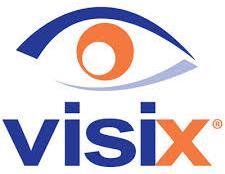
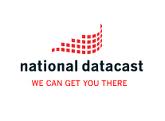
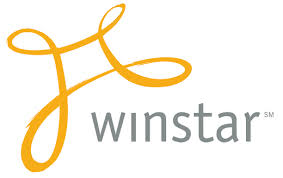

Get Your Marketing Check Up
Find out how The Marketing Doctor David Poulos can diagnose and prescribe the best remedy for your business.

Comments are closed.